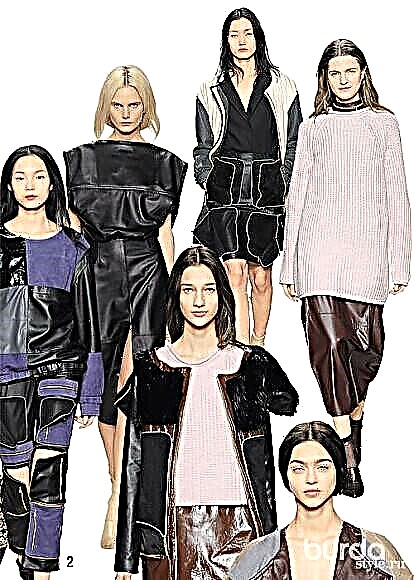This mistake slips in the oral and written language of many! We understand what is wrong and how right.

Strictly speaking, this error is not directly related to sewing and is relevant for everyone without exception. However, people who sew and are fond of fashion have to use these verbs a little more often. Quite often we hear: “Wear a hat!”, “Put on this dress”, “I will not wear this.” Let's figure out what the catch is!
By the way, the problem is so significant that the Russian poetess Novella Matveeva even dedicated a whole poem to her!
"Put on", "put on" ... Two words
We confuse so stupidly!
Frosty dawn came out
The old grandfather put on a fur coat.
A fur coat, therefore, is worn.
"Dress", "put on" ... Let's look:
When to wear and what to wear.
I believe that on grandfather
Three fur coats can be worn.
But I do not think that grandfather
It can be worn on a fur coat!
What do dictionaries say?

So, both of these words have every right to exist, however, despite the similarities, they are used in slightly different ways. According to Ozhegov’s dictionary, the word "clothe" has the following meanings:
1. someone in what or what. Cover someone with some clothes, a blanket. For example, dress a child in a coat.
2. whom (what). Provide clothing. For example, dress someone with style.
Concerning "put on", the values are as follows:
1.To fix something on something, to attach, to attach something to something For example, put a ring on your finger.
2. Cover the body or part of the body with any clothing. For example, wear a sweater on a child.
On the one hand, it’s useful to know the exact dictionary meanings, but on the other hand, it must be admitted that they will not clarify the situation to the end! The meanings are as similar as the words themselves, and in the end it is not entirely clear which option is correct, "I put on a dress" or "I put on a dress."
To help doubters

Many, perhaps, remember from school times a simple hint: we dress others, put on ourselves. But this wording can be deceiving! For example, the phrase "I put on a child a panama hat" is erroneous, although one can be outraged how wrong it is if I donned the panama hat on myself and on the other!
It is better to use a different version of the “catch”: Hope is worn, clothes are worn. The example about Hope is very successful, because it tells us another feature, the difference between the two verbs: “dress” is used with animated nouns (and with inanimate likenesses of a person: doll, dummy, etc., and with body parts, for example, “dress” gloved hand "), and" put on "- with the inanimate.
We apply the rule in practice: “I put on a dress (inanimate.)”, “I put on a panama hat (inanimate.) On a child” and “I dressed a child (odd.)”.
If you suddenly forget the rule itself, remember that Hope is worn and clothes worn and that the point is in animation.
And, of course, do not forget that speech errors do not determine our personality, character and, especially, professionalism in the field of sewing, but every new day is a chance to become better than yesterday, in various fields.
Photo: pixabay
Sewing educational program: how to properly, lining or lining?



